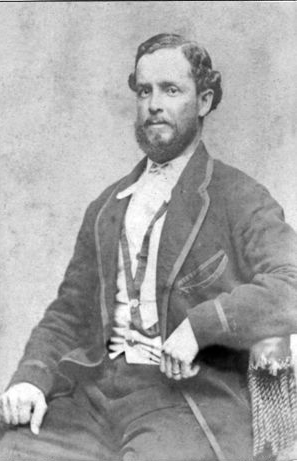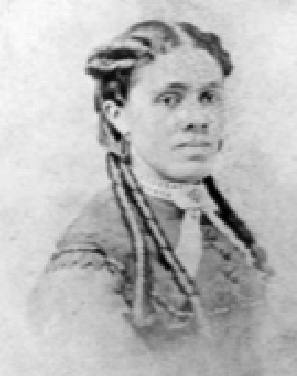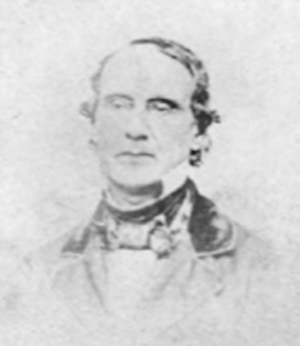Thomas Cardozo facts for kids
Quick facts for kids
Thomas Cardozo
|
|
|---|---|
 |
|
| Mississippi Superintendent of Education 1874–1876 |
|
| Personal details | |
| Born | December 19, 1838 Charleston, South Carolina, U.S. |
| Died | April 13, 1881 (aged 42) Newton, Massachusetts |
| Nationality | American |
| Political party | Republican |
| Spouse | Laura J. Williams |
| Relatives | Francis Lewis Cardozo (brother) Henry Cardozo (brother) Benjamin N. Cardozo (distant relative) |
| Profession | politician, educator, journalist, postal worker |
Thomas Whitmarsh Cardozo (born December 19, 1838 – died April 13, 1881) was an important American educator and public official. He lived during a time in U.S. history called the Reconstruction Era. This was after the Civil War. Cardozo served as the State Superintendent of Education in Mississippi. He was the first African American to hold this important position.
Contents
Thomas Cardozo's Early Life and Family
Thomas Cardozo was born in Charleston, South Carolina in 1838. He was born a free person. His father, Isaac Nunez Cardozo, came from a well-known Jewish family. Isaac worked for the U.S. Customs House in Charleston for 24 years.
Thomas's mother was Lydia Weston. She was a freed slave of mixed heritage and worked as a seamstress. Thomas had two older brothers, Henry Cardozo and Francis Lewis Cardozo. He also had two older sisters, Lydia Frances and Eslanda.
Growing Up in Charleston
In Charleston, Thomas was part of a special group called the "free-Negro elite." He went to private schools for free Black children. These schools were mostly taught by free Black teachers. His father, Isaac, and his uncle, Jacob Cardozo, also taught him. Jacob was an economist and ran a newspaper.
Life became harder for free Black people in the 1850s. Laws like the Fugitive Slave Act of 1850 made them worry about being enslaved. When Thomas's father died in 1855, the family lost their protector. Thomas was 17 years old. He started working as an apprentice in a company that made machines for processing rice.
Moving North and Starting a Family
In 1857, Thomas moved to New York to continue his education. His mother and siblings joined him there by 1860. They later settled in Cleveland, Ohio. Thomas studied at the Newburgh Collegiate Institute. He trained to become a teacher.
The Civil War began in 1861, and Thomas started teaching that same year. He married Laura J. Williams. Laura was a teacher and a talented musician from Brooklyn. Thomas and Laura had two sons: Alvin, born in 1863, and Francis, born in 1865.
Thomas Cardozo's Career in Education
Thomas Cardozo began teaching in Staten Island, New York, at a segregated school. In 1863, he thanked people in the local newspaper for helping African Americans after the New York City draft riots affected Staten Island.
In April 1865, after the Civil War ended, Thomas and his family moved back to his hometown of Charleston, South Carolina.
Working with the American Missionary Association
In Charleston, Thomas helped with education efforts right after the war. He worked for the American Missionary Association (AMA). He found buildings for schools and obtained books. He also managed teachers and hired new ones. Thomas was the first principal of the Tappan School in Charleston, which was an AMA school.
A few months later, the AMA replaced Thomas with his brother, Francis Lewis Cardozo. Thomas then worked as a grocer for a short time. After his store burned down, he moved to Baltimore, Maryland.
Teaching in Maryland and North Carolina
In Baltimore, Thomas and his wife taught at the Negro Industrial School. When the school lost its funding in 1866, they moved to Syracuse, New York. There, Thomas raised money to support teaching in Elizabeth City, North Carolina.
In 1869, the Cardozos moved to Elizabeth City. They taught there for about four months. Thomas then worked to get more support for their education work. He received a letter of praise from a U.S. Senator and the Governor of North Carolina.
With this support, Thomas got a thousand dollars from the Freedmen's Bureau. This money was used to build a normal school in Elizabeth City. A normal school trains high school graduates to become teachers. The school opened in 1870 with 123 students.
Leading Education in Mississippi
In January 1871, Thomas Cardozo and his family moved to Vicksburg, Mississippi. He and his wife immediately started teaching there. Several years later, Thomas Cardozo became the State Superintendent of Education in Mississippi. He held this position from 1874 to 1876. During his time as Superintendent, he suggested using the same textbooks in all Mississippi schools.
Thomas Cardozo's Political Career
Thomas Cardozo was interested in politics. He wrote articles in a newspaper called the National Anti-Slavery Standard about the role of Black people in the changing political scene after the Civil War.
Entering Mississippi Politics
Cardozo was a member of the Republican Party. In 1870, he ran for Sheriff in North Carolina but did not win. Five months later, in January 1871, he moved to Vicksburg, Mississippi.
Mississippi had many Black citizens, which made it possible for Cardozo to hold public office. After living there for six months, he was elected circuit court clerk of Warren County, Mississippi. He started this job on January 1, 1872. He wrote about his experiences in Mississippi for a newspaper called the New National Era. He used the pen name "Civis."
In November 1873, Cardozo was elected State Superintendent of Education in Mississippi. He was elected along with Adelbert Ames as Governor and other important officials. He was the first African American to hold this state-level education position.
Challenges and Later Life
During the 1870s, many white leaders in Mississippi tried to regain control of the government. This led to political attacks against Republican officials, including Thomas Cardozo.
In July 1875, a white mob attacked a meeting where Cardozo was supposed to speak in Vicksburg. This led to violence in the streets. City officials helped Cardozo escape the city because he was a main target.
The Union Army began to leave the South in 1875. White Democrats gained control of the Mississippi state government. They used violence and threats against Black Republican voters. In February 1876, state lawmakers started a process to remove Superintendent Cardozo from his job.
Thomas Cardozo was allowed to resign from his position. He submitted his resignation on March 22, 1876. After leaving politics and the dangerous situation in Mississippi, Cardozo moved to Newton, Massachusetts. He worked for the postal service there until he passed away in 1881 at the age of 42.
Today, Thomas Cardozo Middle School in Jackson, Mississippi, which is part of the Jackson Public School District, is named in his honor. It opened in 2010.
See also



